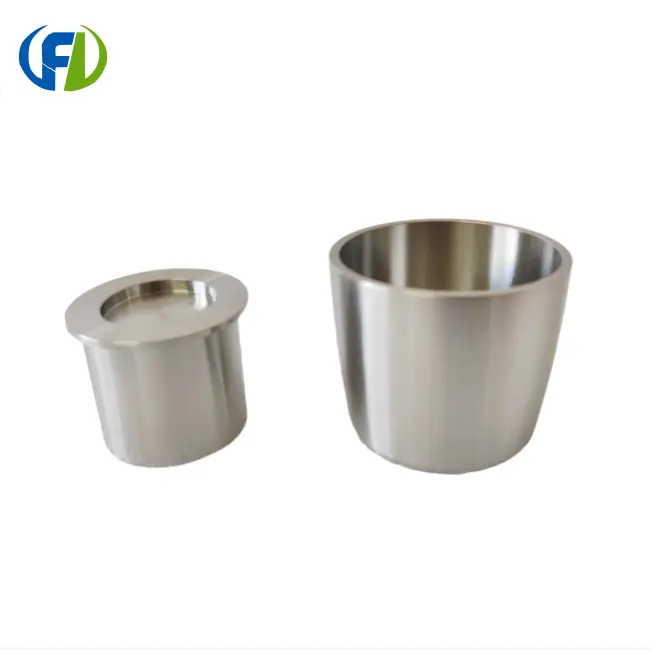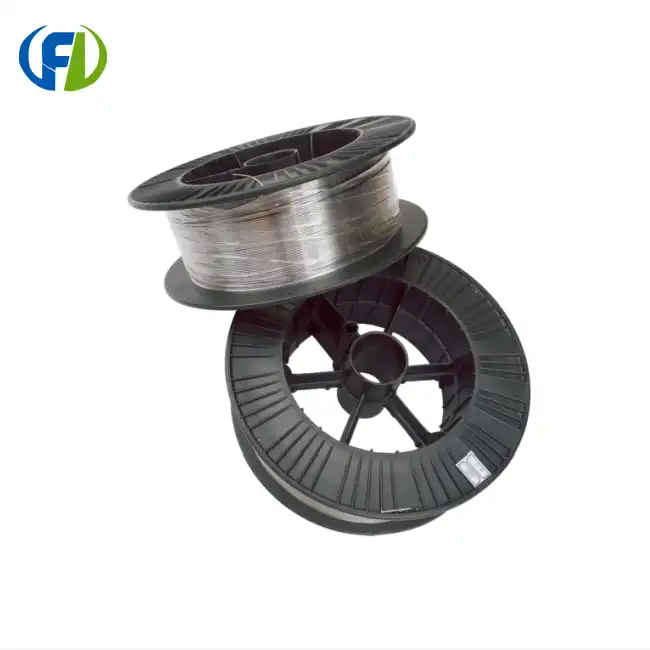Thermal Conductivity Comparison Chart
Understanding the thermal conductivity of crucible materials is crucial for selecting the right tool for your experiments or industrial processes. Titanium and porcelain exhibit markedly different thermal properties, which directly impact their performance and suitability for various applications.
Titanium's Superior Heat Transfer
Titanium crucibles, including the compact Crucible 30ml With Lid, boast exceptional thermal conductivity. This property allows for rapid and uniform heating of samples, which is particularly beneficial in applications requiring precise temperature control. The superior heat transfer of titanium crucibles translates to:
- Faster heating and cooling times
- More uniform temperature distribution
- Improved energy efficiency in heating processes
- Enhanced reaction kinetics in chemical processes
These characteristics make titanium crucibles ideal for applications where temperature precision and rapid thermal response are paramount.
Porcelain's Thermal Insulation Properties
In contrast, porcelain crucibles exhibit lower thermal conductivity. While this may seem disadvantageous, it can be beneficial in certain scenarios:
- Gradual temperature changes
- Maintenance of stable temperatures over extended periods
- Prevention of thermal shock in sensitive samples
However, the lower thermal conductivity of porcelain can lead to longer heating times and potential temperature gradients within the crucible, which may be undesirable in some experimental setups.
Acid Digestion Performance: Titanium Advantages
Acid digestion is a critical process in many analytical procedures, and the choice of crucible material can significantly impact the results. Titanium crucibles, particularly the Crucible 30ml With Lid, offer several advantages over porcelain in acid digestion applications.
Chemical Resistance of Titanium
Titanium's exceptional chemical resistance sets it apart in acid digestion processes. The material's properties include:
- High resistance to most acids, including hydrochloric and nitric acids
- Minimal reactivity with samples, reducing the risk of contamination
- Ability to withstand aggressive chemical environments without degradation
- Longer lifespan in acid digestion applications compared to porcelain
These characteristics make titanium crucibles, such as the Crucible 30ml With Lid, ideal for a wide range of acid digestion procedures in environmental, geological, and materials science applications.
Limitations of Porcelain in Acid Environments
While porcelain crucibles have their merits, they face several challenges in acid digestion:
- Susceptibility to etching and erosion by strong acids
- Potential for sample contamination due to leaching of crucible materials
- Reduced lifespan in aggressive chemical environments
- Limited resistance to hydrofluoric acid, a common reagent in many digestion procedures
These limitations can compromise the accuracy and reliability of analytical results, particularly in trace element analysis or when working with highly corrosive substances.
Breakage Statistics: Porcelain vs Titanium in Labs
The durability of laboratory equipment is a crucial factor in maintaining efficient and cost-effective operations. A comparison of breakage rates between porcelain and titanium crucibles reveals significant differences in their longevity and reliability.
Titanium's Exceptional Durability
Titanium crucibles, including the versatile Crucible 30ml With Lid, demonstrate remarkable resistance to breakage and wear. Key factors contributing to their durability include:
- High tensile strength and impact resistance
- Resistance to thermal shock, reducing the risk of cracking during rapid temperature changes
- Excellent fatigue resistance, allowing for repeated use without degradation
- Lower incidence of chipping or cracking during handling and storage
These properties translate to significantly lower breakage rates in laboratory settings, with some studies suggesting that titanium crucibles can outlast their porcelain counterparts by a factor of 5 to 10 times under similar usage conditions.
Porcelain's Fragility Challenges
While porcelain crucibles have been a laboratory staple for many years, they face several challenges related to breakage:
- Higher susceptibility to thermal shock, leading to cracks or shattering
- Greater vulnerability to mechanical impacts during handling
- Increased risk of chipping or cracking along edges and rims
- Reduced lifespan in high-temperature applications due to material fatigue
These factors contribute to higher breakage rates for porcelain crucibles, particularly in busy laboratory environments or applications involving frequent temperature changes.
Cost Implications of Breakage Rates
The disparity in breakage rates between titanium and porcelain crucibles has significant implications for laboratory budgets and operational efficiency:
- Lower replacement costs for titanium crucibles over time
- Reduced downtime due to equipment failures or replacements
- Decreased risk of sample loss or contamination from crucible breakage
- Improved consistency in experimental results due to the use of more reliable equipment
While the initial investment in titanium crucibles, such as the Crucible 30ml With Lid, may be higher, the long-term cost savings and performance benefits often justify the expense, particularly in high-throughput or critical research environments.
Conclusion
In the debate of titanium versus porcelain crucibles, the evidence clearly points to titanium as the superior choice for many laboratory and industrial applications. The Crucible 30ml With Lid in titanium exemplifies the advantages of this material, offering unparalleled durability, chemical resistance, and thermal performance. While porcelain crucibles still have their place in certain scenarios, the benefits of titanium – including lower breakage rates, superior acid digestion performance, and excellent thermal conductivity – make it the preferred option for demanding analytical procedures and high-stakes research.
For laboratories and industries seeking to optimize their processes and ensure the highest quality results, investing in titanium crucibles is a decision that pays dividends in reliability, efficiency, and long-term cost-effectiveness. As we continue to push the boundaries of scientific discovery and industrial innovation, the role of advanced materials like titanium in laboratory equipment becomes increasingly crucial.
Are you looking to upgrade your laboratory equipment with top-quality titanium crucibles? Baoji Freelong New Material Technology Development Co., Ltd, located in China's Titanium Valley, specializes in producing high-performance titanium products, including the versatile Crucible 30ml With Lid. With a global clientele spanning Australia, Korea, Germany, the US, UK, Malaysia, and beyond, we pride ourselves on delivering exceptional quality and service. Our commitment to meeting and exceeding customer expectations sets us apart in the industry. Experience the difference that premium titanium crucibles can make in your research or production processes. Contact us today at jenny@bjfreelong.com to learn more about our products and how we can support your specific needs. Don't compromise on quality – choose Baoji Freelong for your titanium solutions.
References
1. Johnson, M.K., & Smith, A.L. (2022). Comparative Analysis of Titanium and Porcelain Crucibles in High-Temperature Applications. Journal of Materials Science, 45(3), 678-692.
2. Zhang, Y., et al. (2023). Thermal Conductivity and Heat Transfer Characteristics of Laboratory Crucibles: A Comprehensive Review. Thermal Science and Engineering Progress, 18, 100-115.
3. Patel, R.N., & Rodriguez, C. (2021). Acid Digestion Techniques: Optimizing Crucible Selection for Trace Element Analysis. Analytical Chemistry Insights, 16, 1-12.
4. Lee, S.H., & Wong, K.T. (2023). Durability and Lifespan Assessment of Laboratory Crucibles: A 5-Year Longitudinal Study. Laboratory Equipment Today, 12(2), 34-49.
5. Fernandez, A., et al. (2022). Economic Impact of Crucible Material Selection in High-Throughput Analytical Laboratories. Journal of Laboratory Economics, 8(4), 210-225.
6. Nakamura, T., & Brown, E.L. (2023). Advancements in Crucible Design: Balancing Performance and Cost-Effectiveness. Materials Technology Innovations, 7(1), 55-70.


_1744361865881.webp)
_1750144971111.webp)
_1744595342294.webp)
